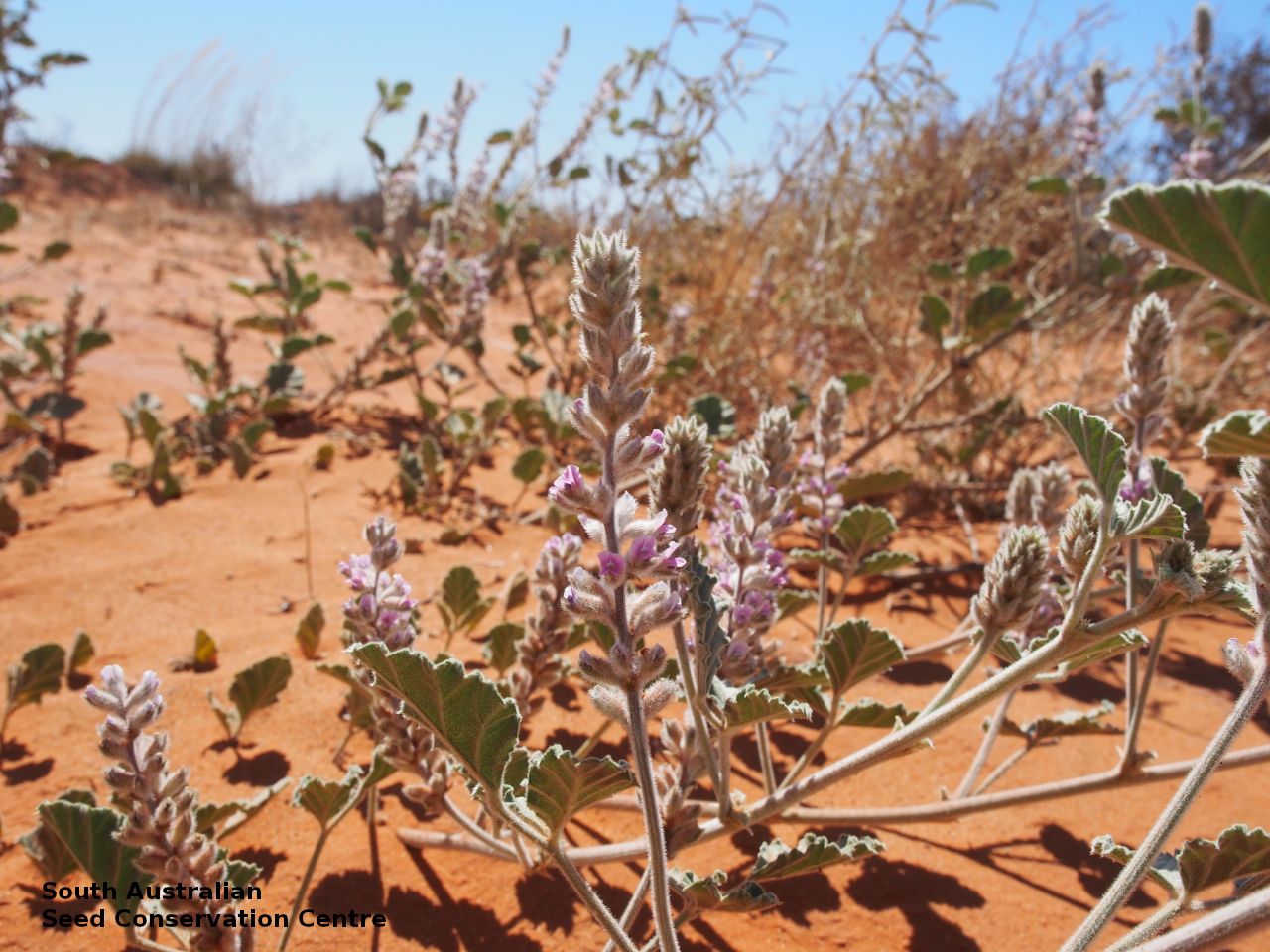
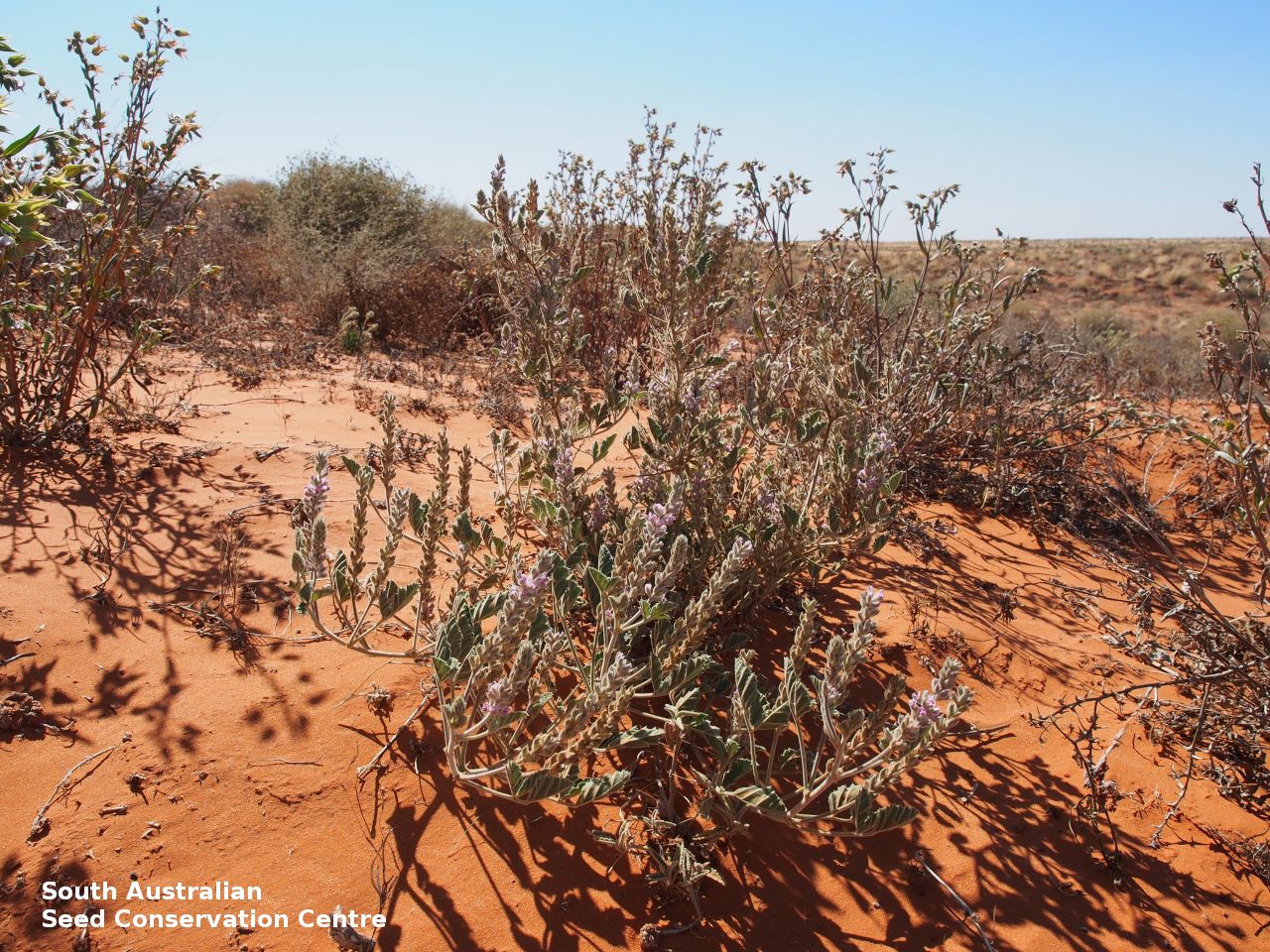
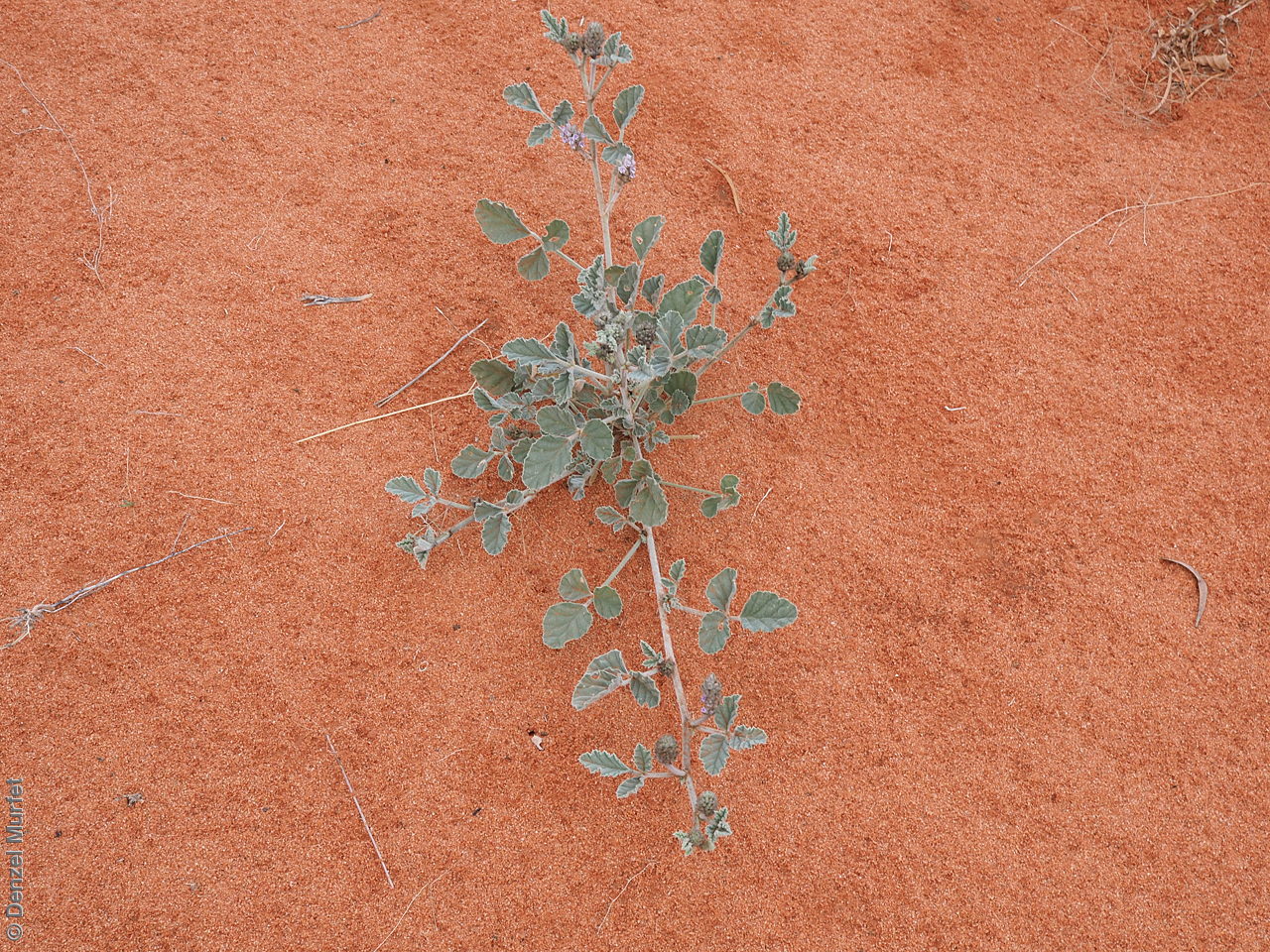
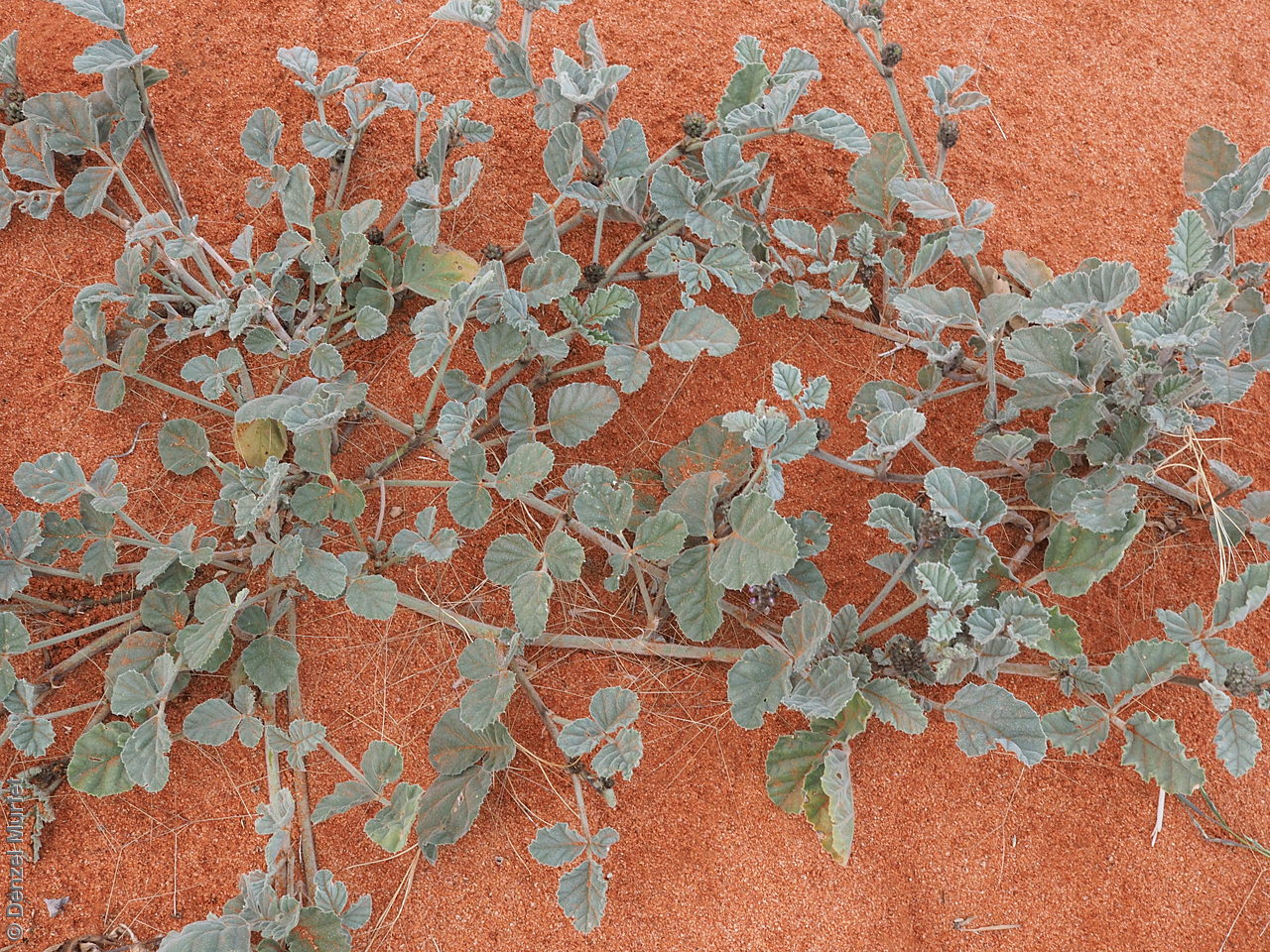
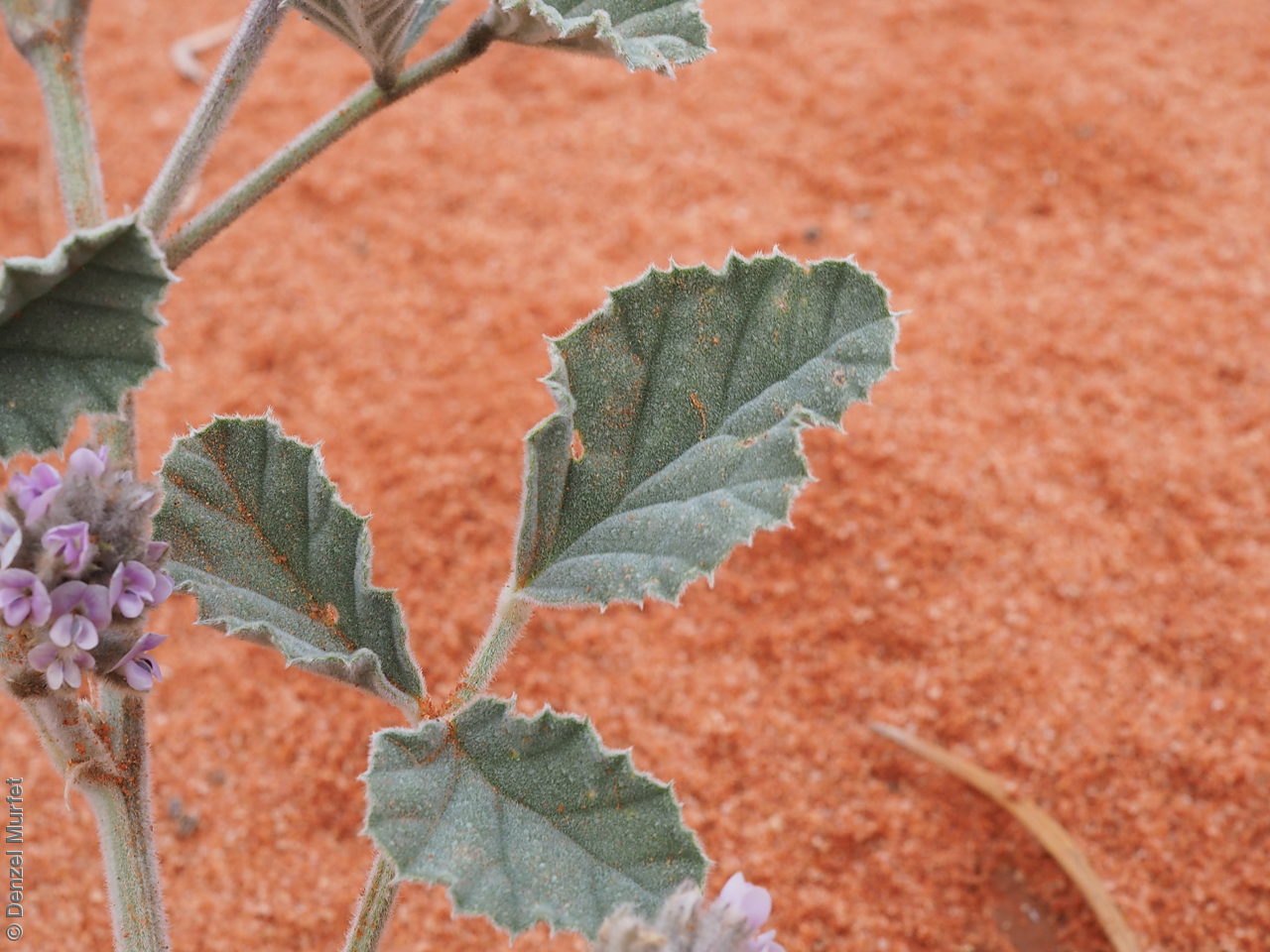
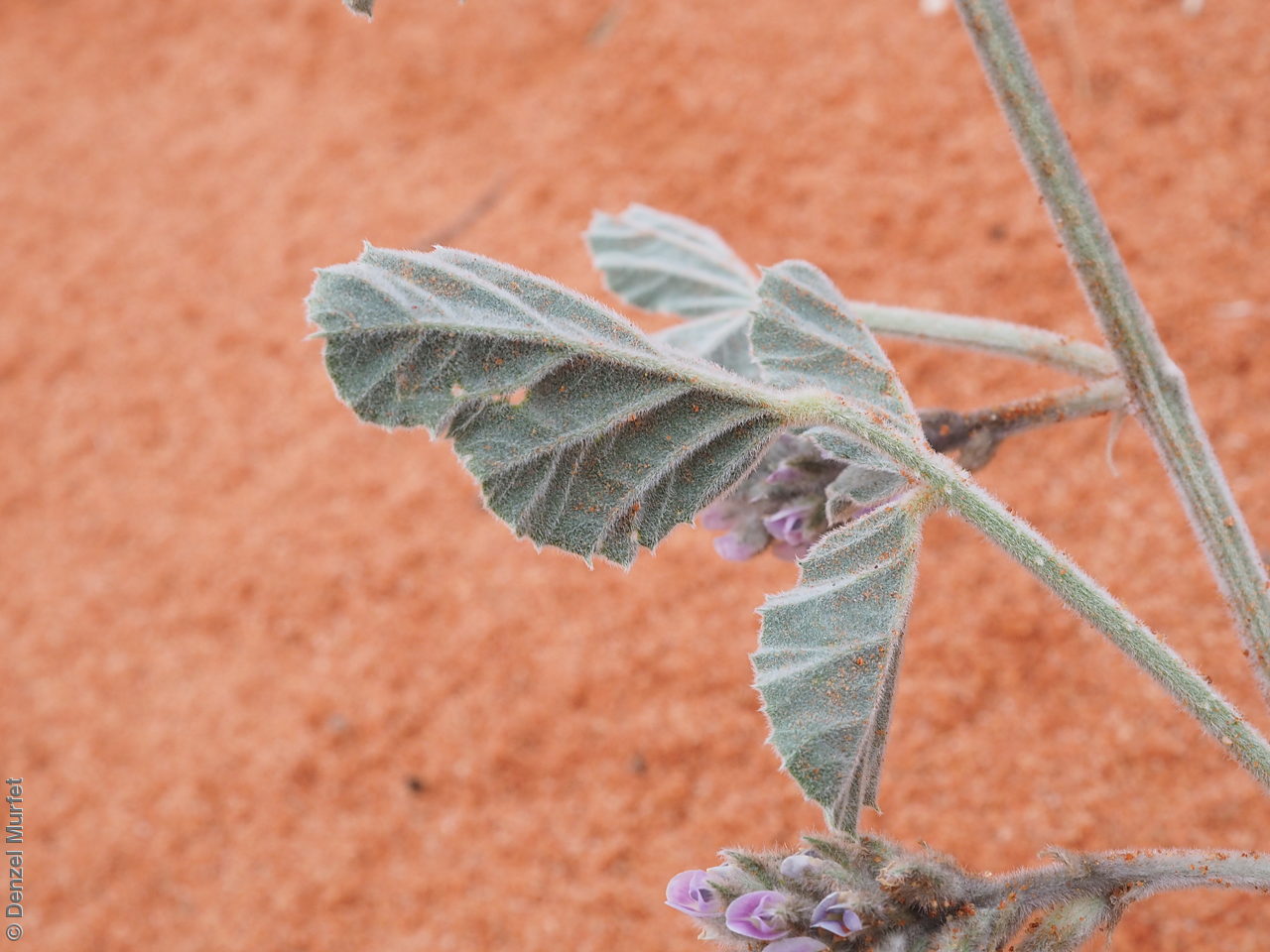
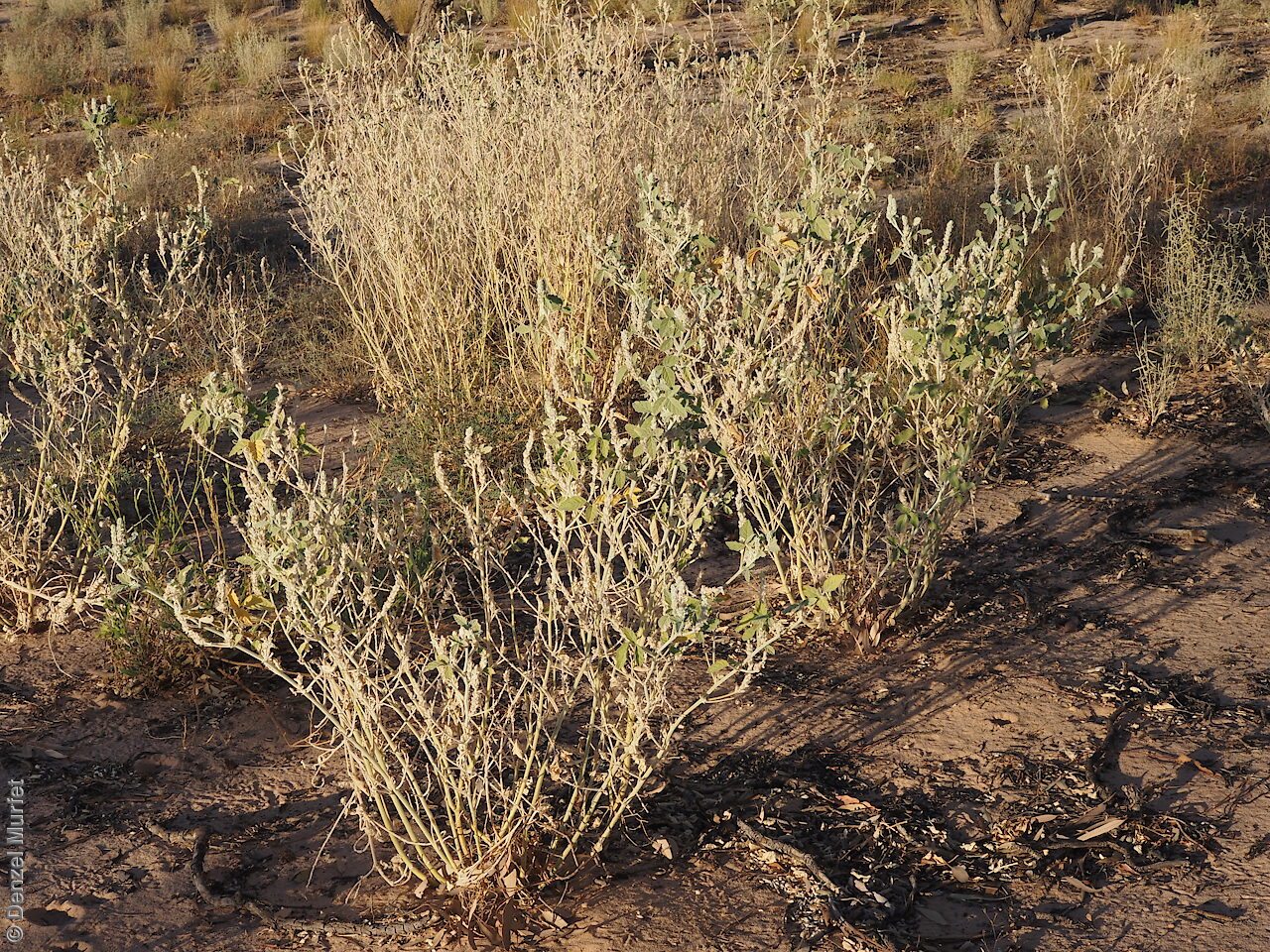
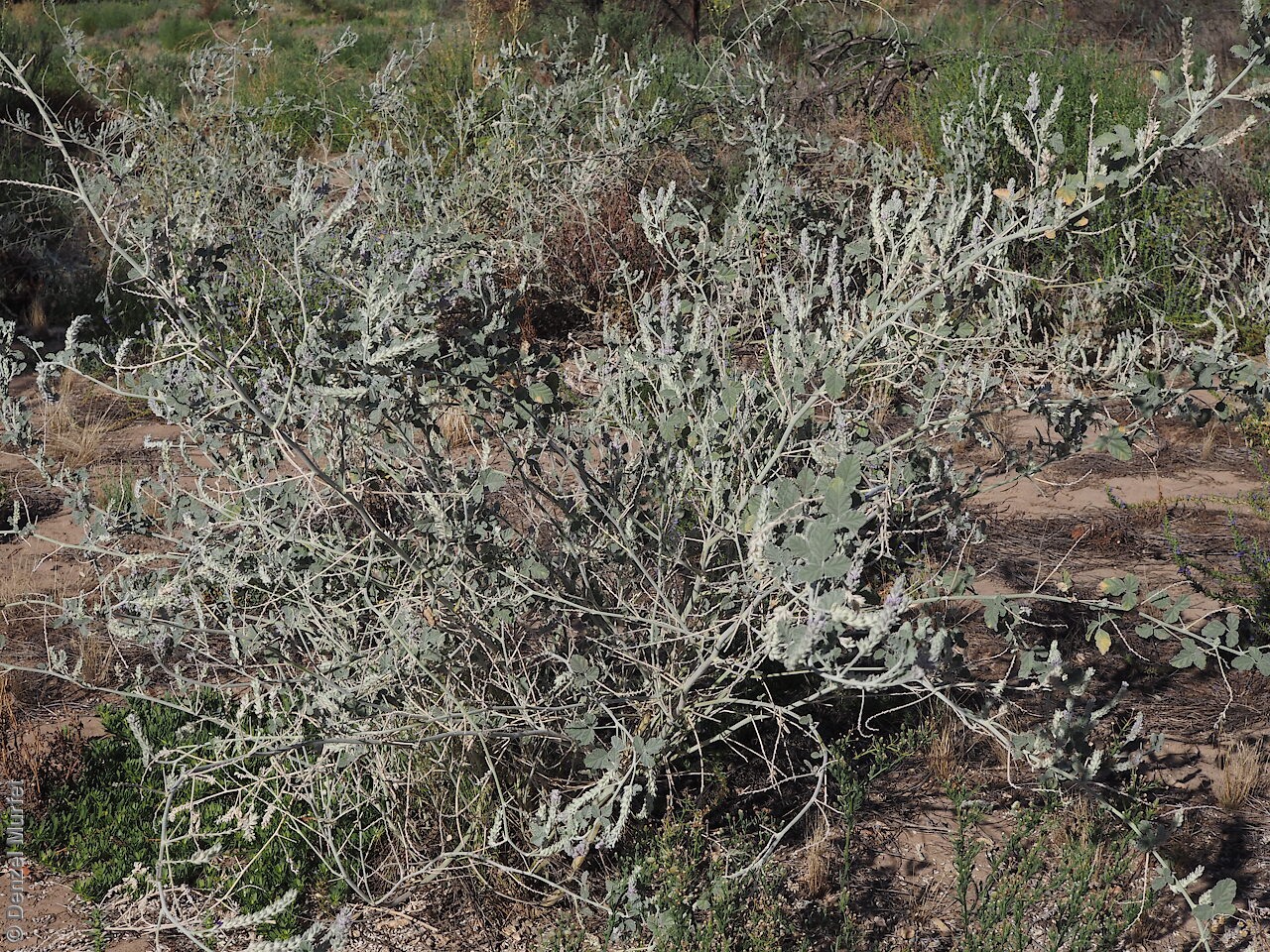
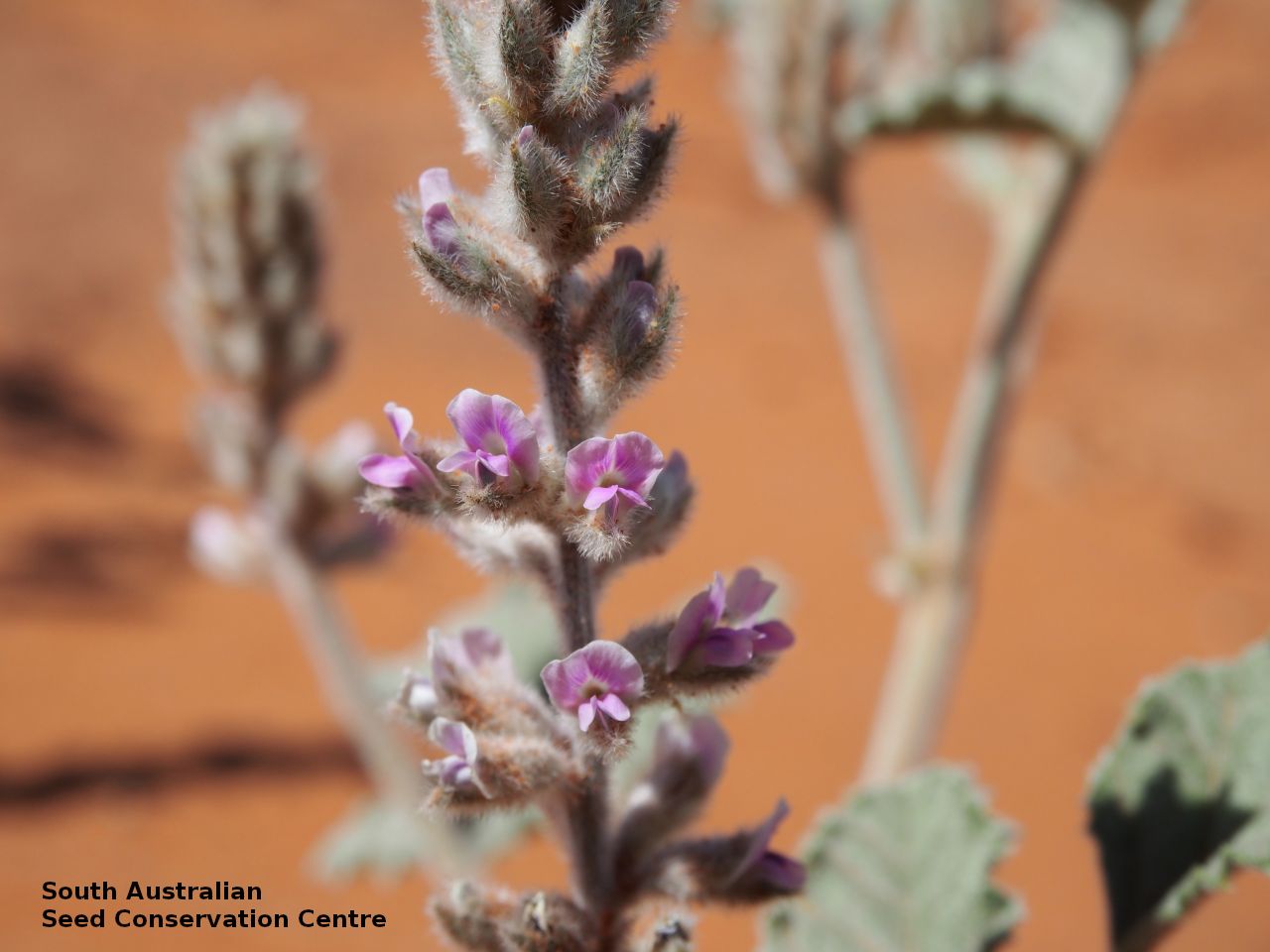
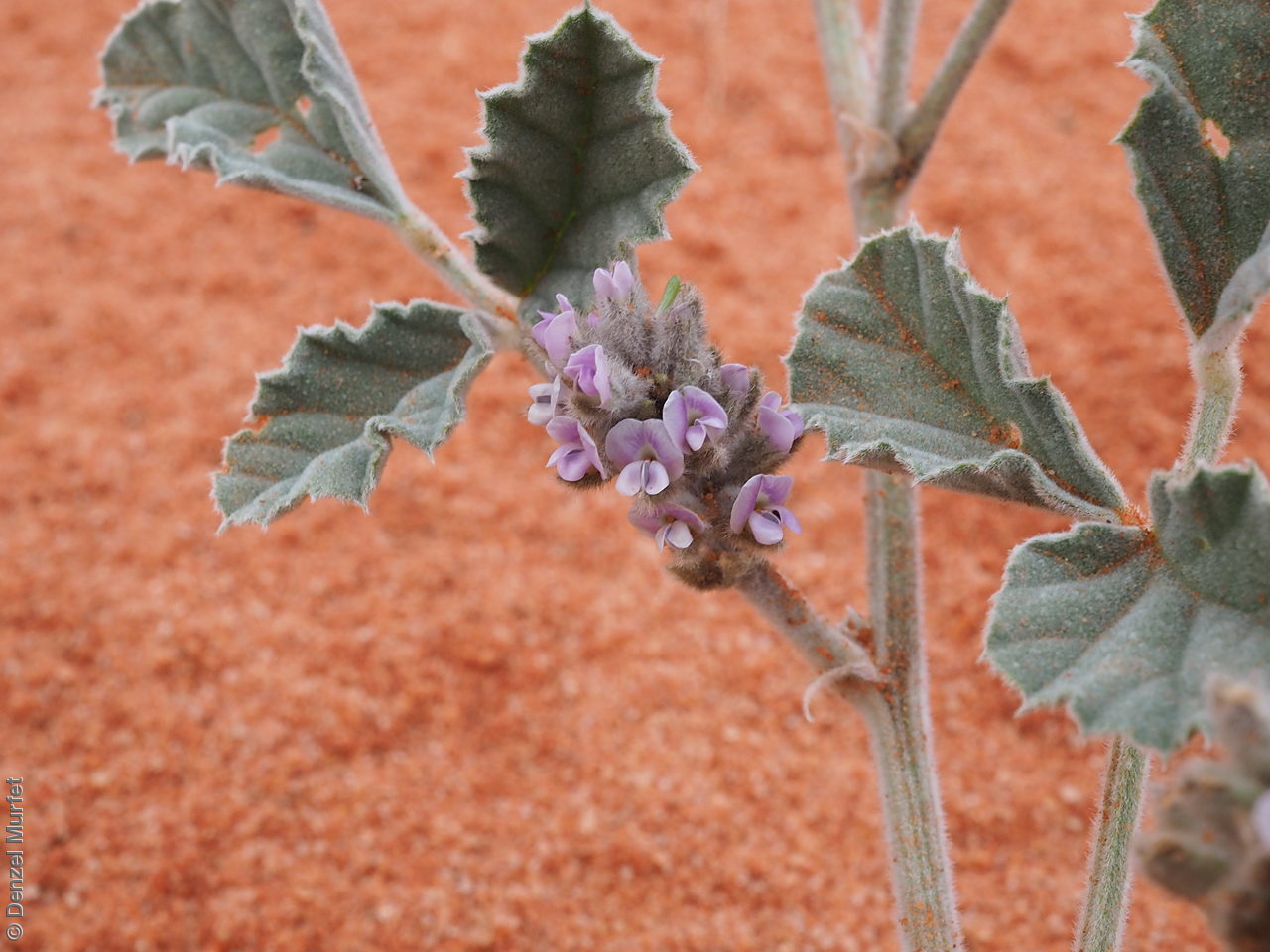
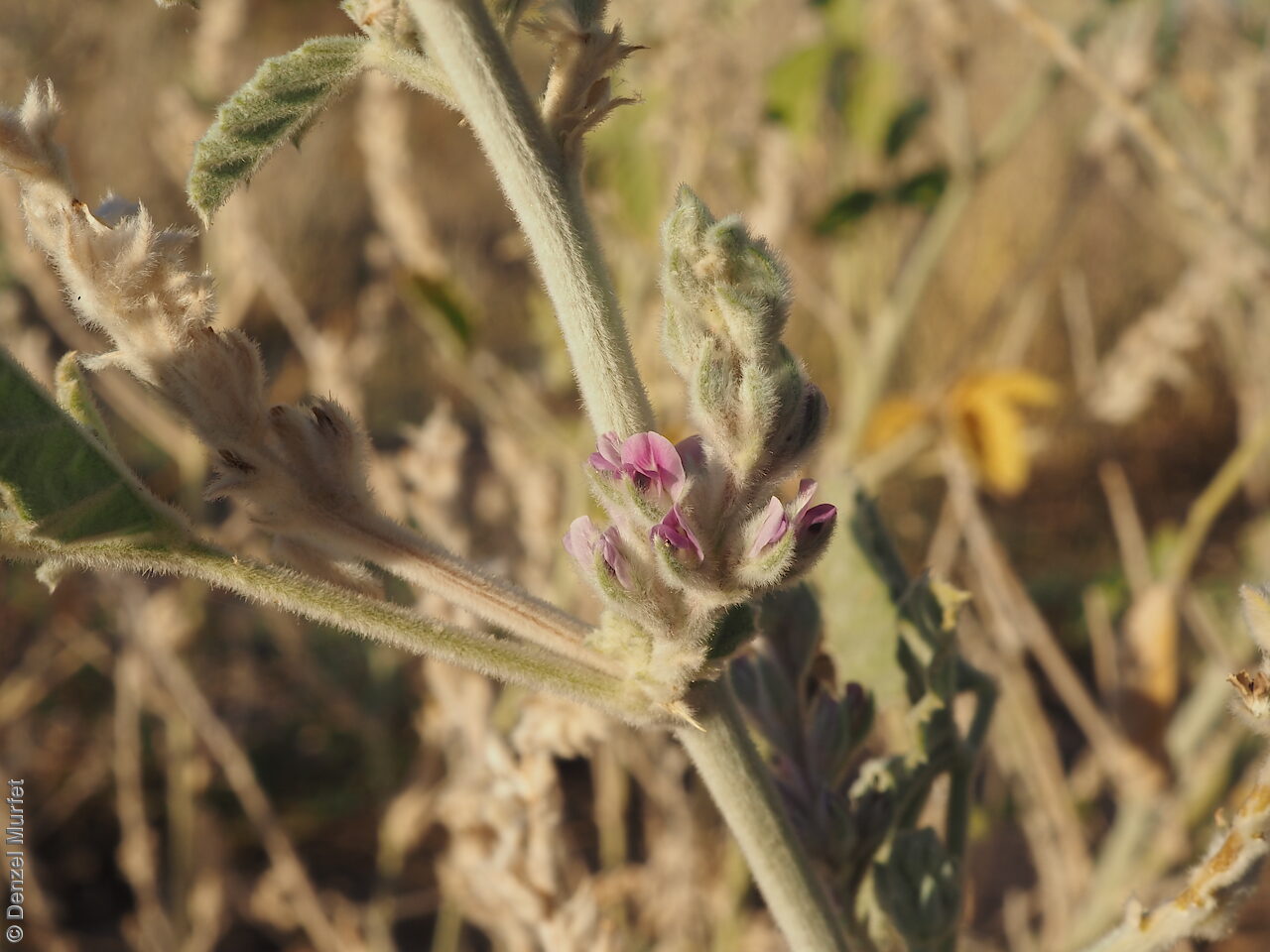
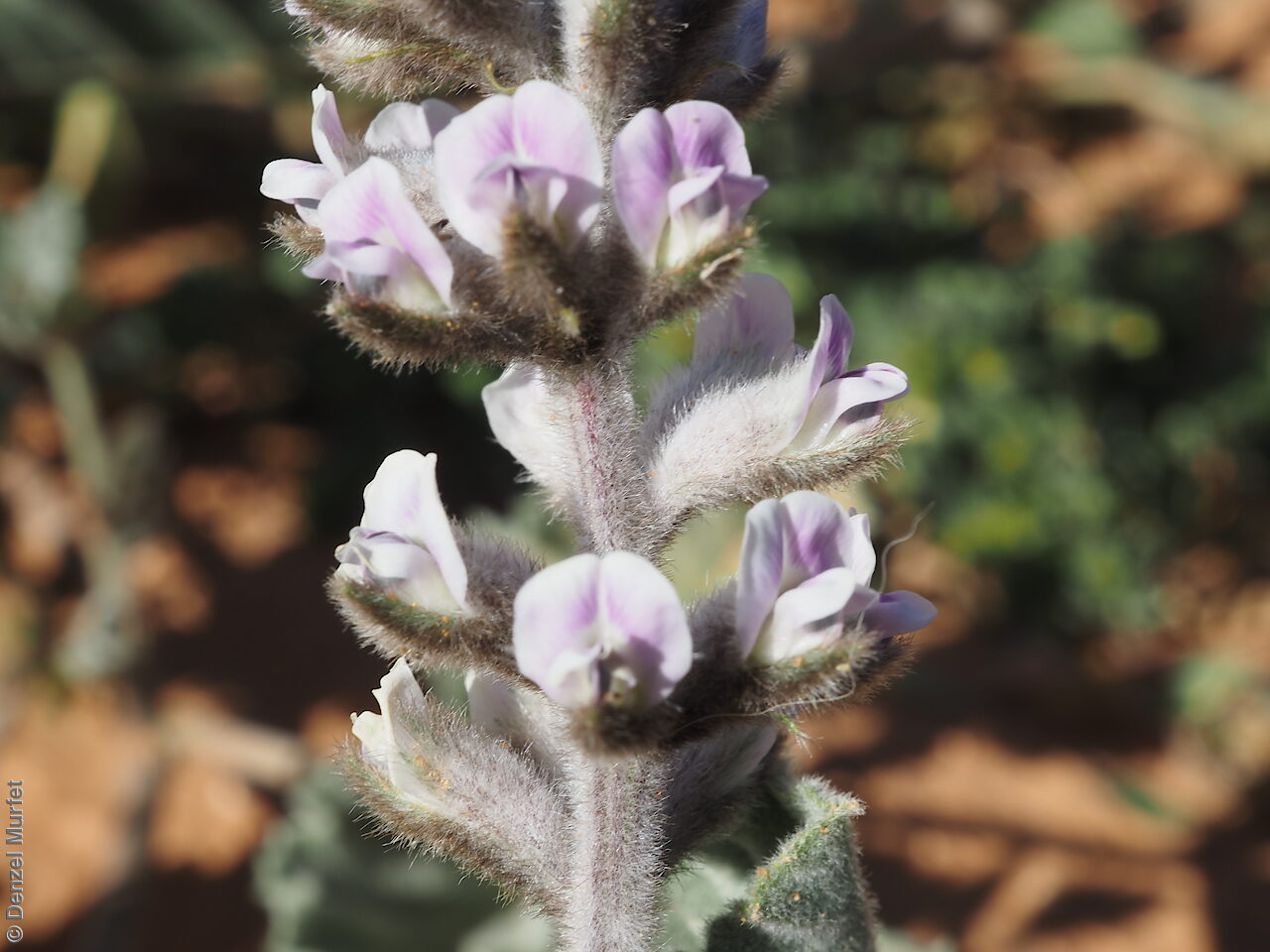
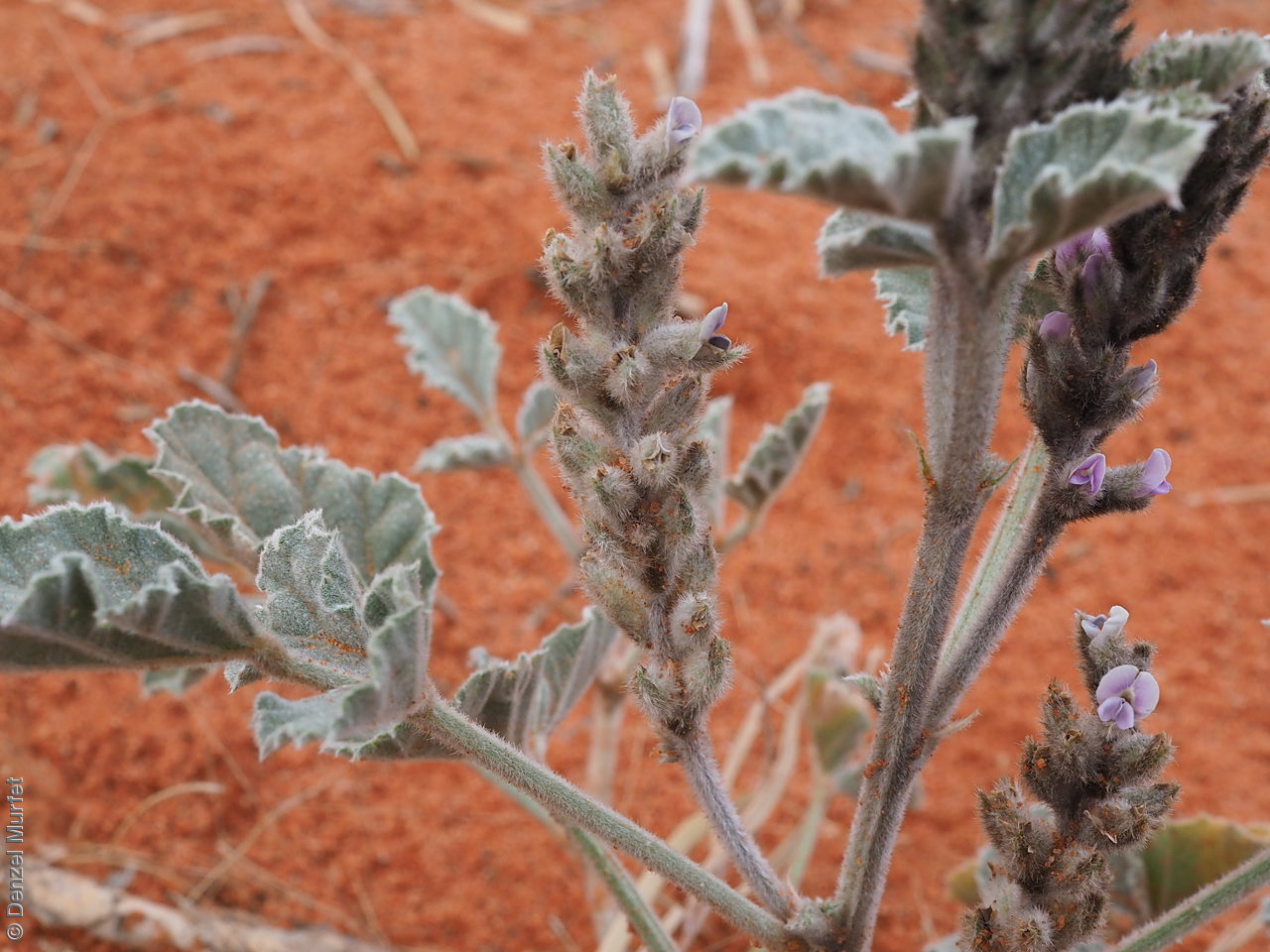
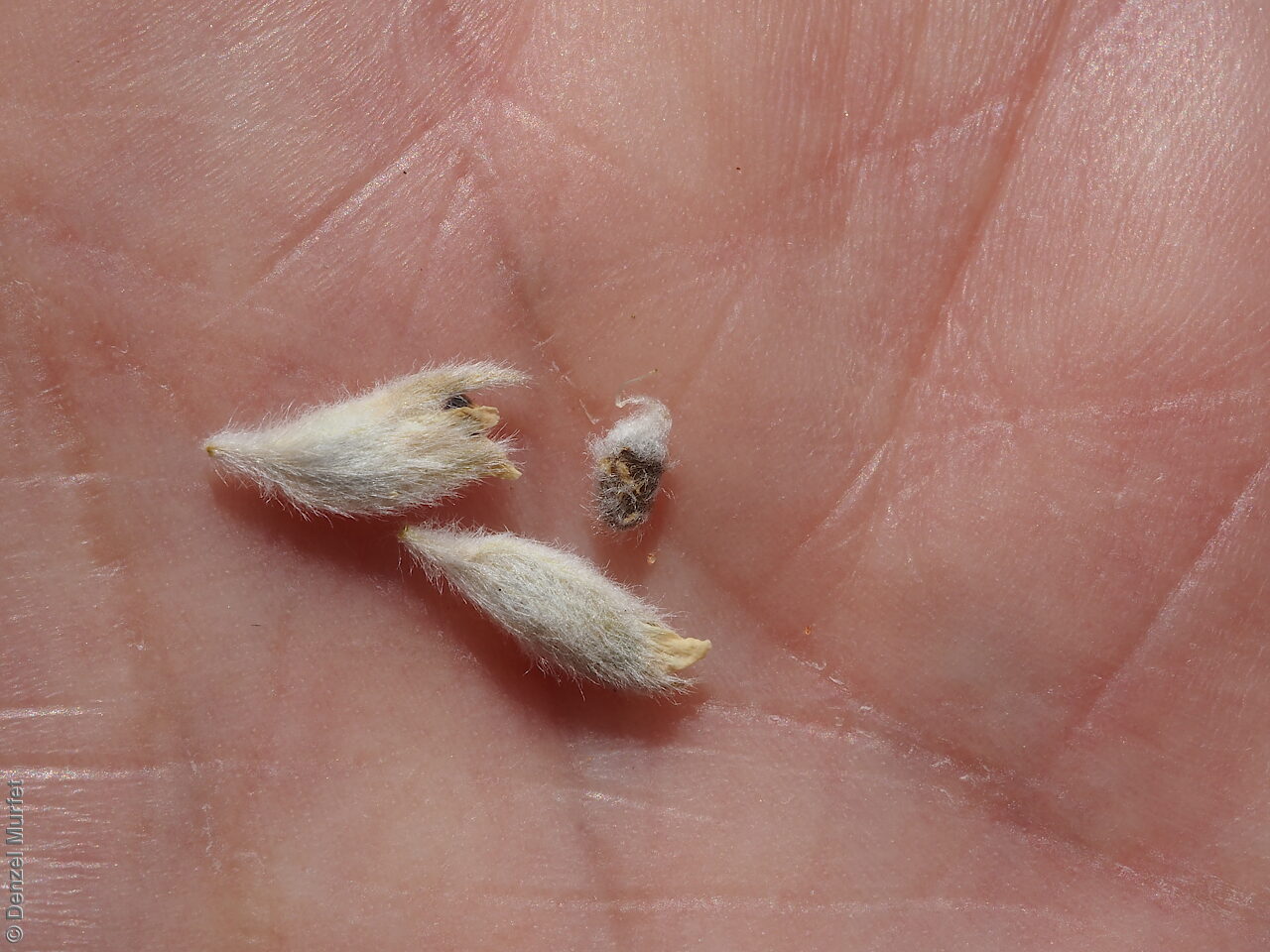
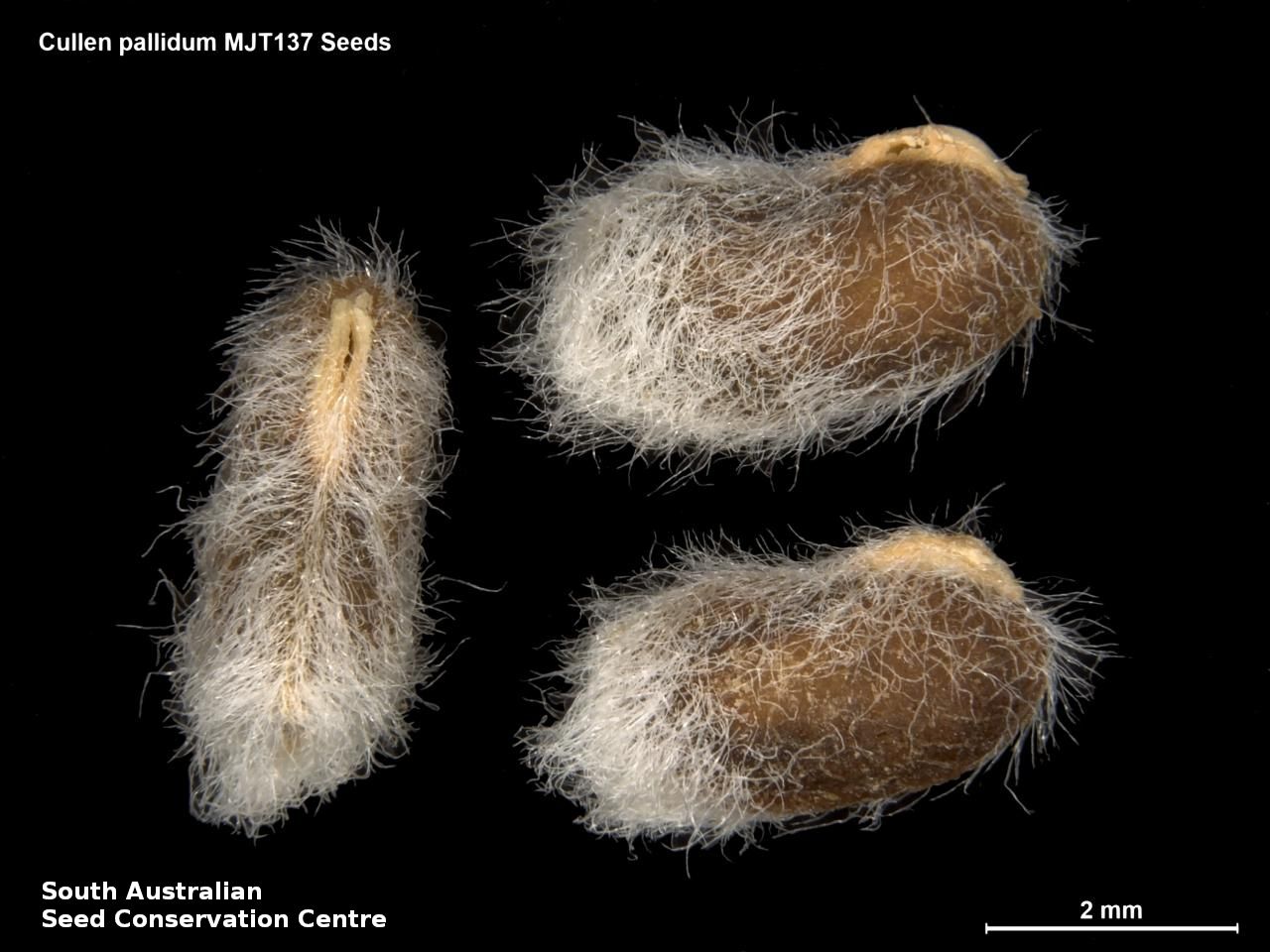
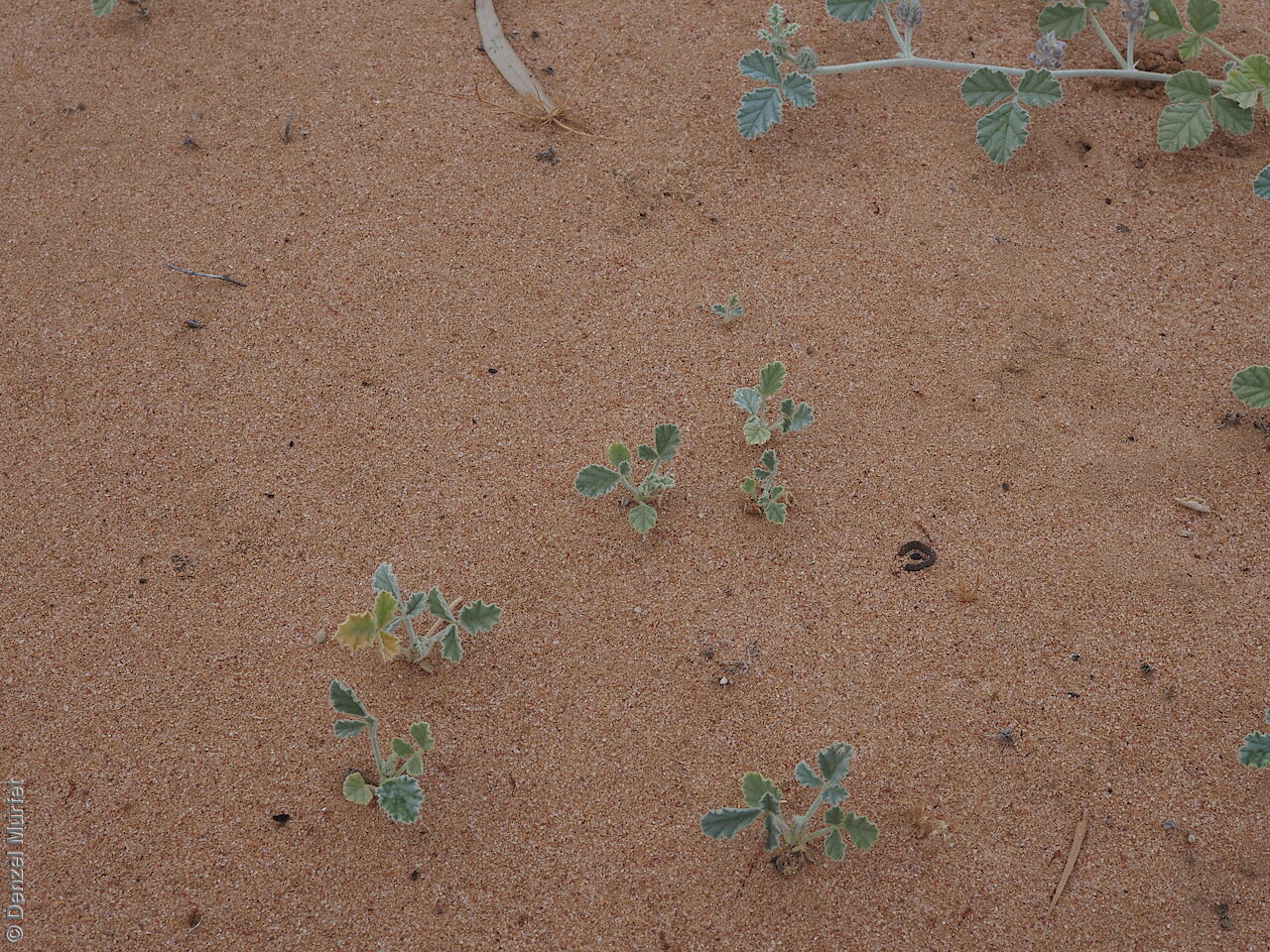
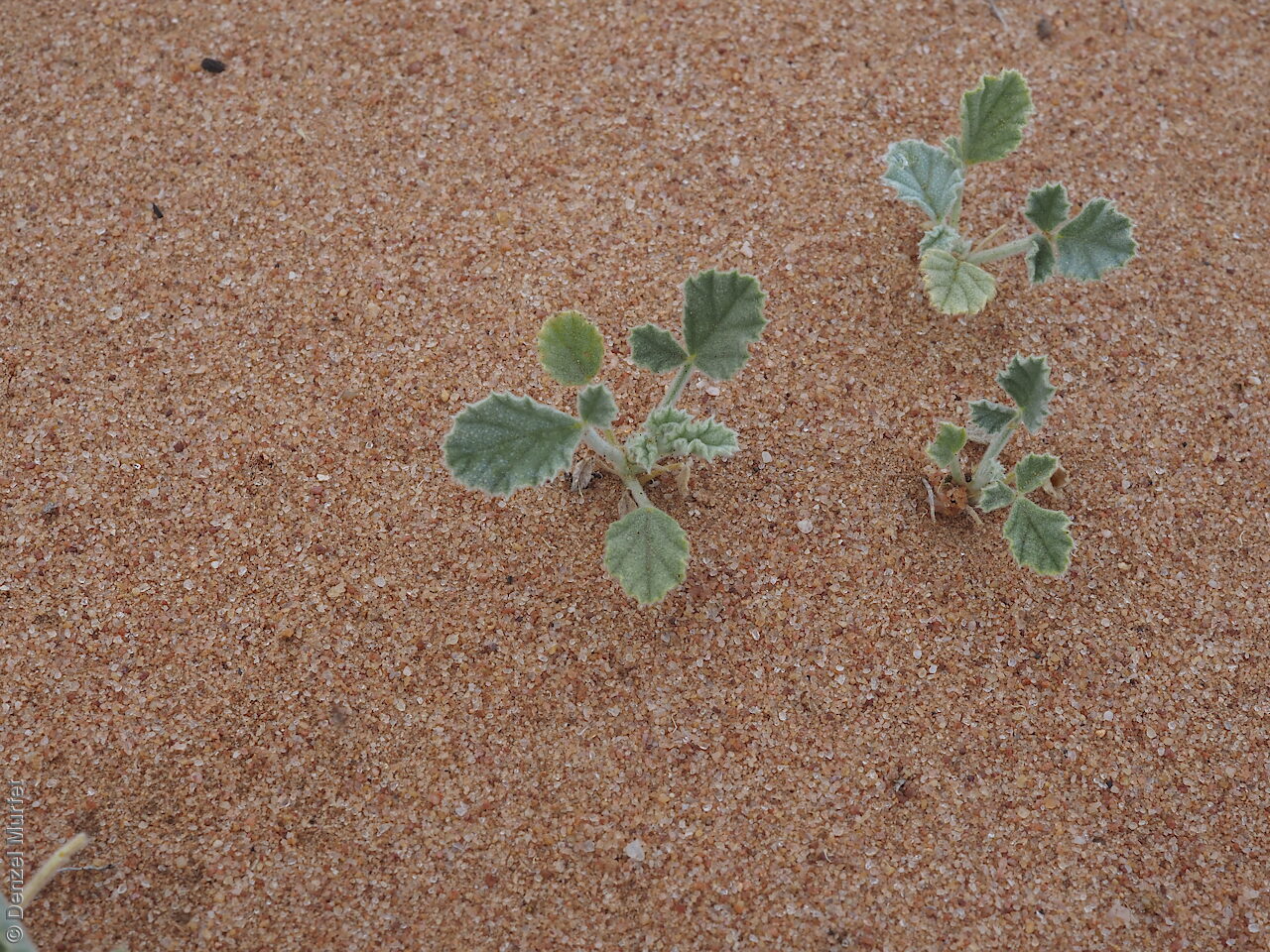

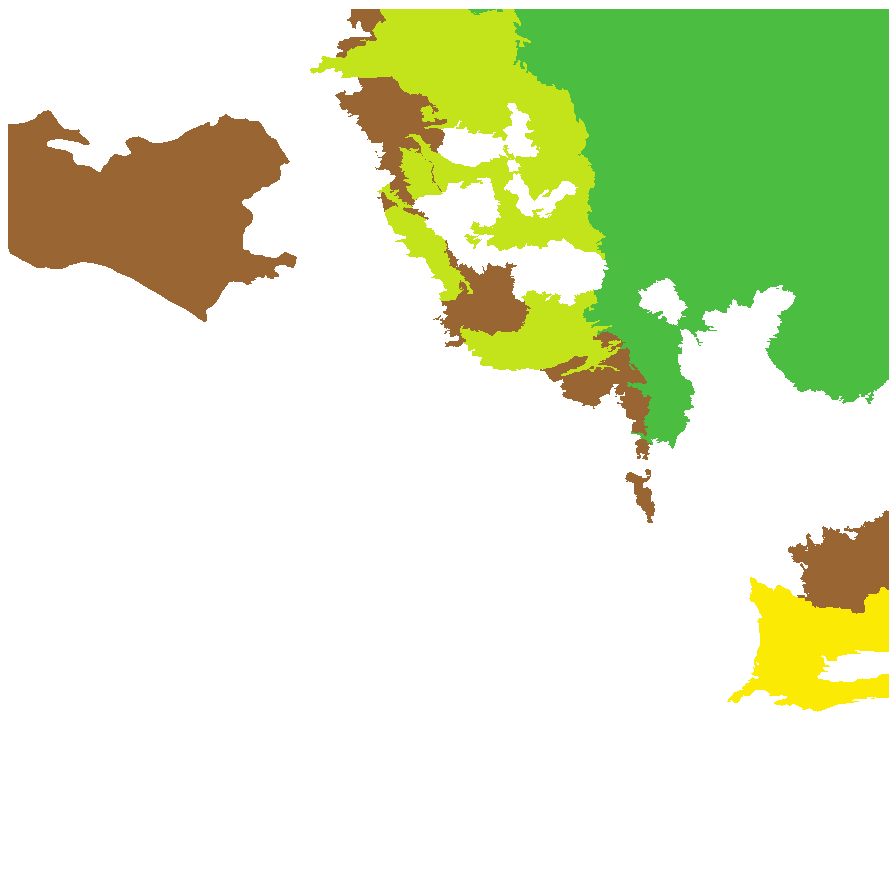
Botanical art
Prior names
Psoralea eriantha, partly
Psoralea pallida
Common names
Woolly Scurf-pea
White Scurf-pea
Etymology
Cullen named after William Cullen (1710-1790), a Scottish physician and chemist who lectured at the University of Glasgow on botany, among other things . Pallidum from the Latin 'pallidus' meaning pale, referring to the pale purple flowers.
Distribution and status
Found in the north-east of South Australia and along the Murray growing on sands, often on dunes. Also found in all mainland States. Native. Common in South Australia. Rare in Victoria. Common in the other States.
Herbarium regions: North Western, Lake Eyre, Gairdner-Torrens, Flinders Ranges, Murray
NRM regions: Alinytjara Wilurara, South Australian Arid Lands
AVH map: SA distribution map (external link)
Plant description
Erect or ascending, finally decumbent, short-lived perennial herb, sometimes flowering first year and appearing annual. Grey-pubescent or villous; stems striate to 90 cm long, with glands not visible. Leaves to 10 cm long pinnately 3-foliate; leaflets ovate, to 5 cm long and 35 mm wide; undulate, margins toothed, glands few or obscure. Flower-spike to 8 cm long, with purplish o yellow pea-flowers. Flowers mainly in spring and summer. Fruits are black ovoid pod to 4 mm long, hairy with one seed inside. Seeds are brown bean-shaped seed to 4 mm long and 2 mm wide, with dense hairs at one end and scattered hairs towards the other end. Seed embryo type is bent.
Seed collection and propagation
Collect seeds between September and April. Collect maturing pods, those that are fat, turning black and contain a brown seed inside, by running your hands along the fruit-spikes. Place the pods in a tray and leave to dry for 1 to 2 weeks or until the pods begin to split. Then rub the dried pods to dislodge the seeds. Use a sieve to separate any unwanted material. Store the seeds with a desiccant such as dried silica beads or dry rice, in an air tight container in a cool and dry place. From two collections, the seed viability was high, ranging from 95% to 100%. This species has physical dormancy that needs to be overcome for the seed to germinate (e.g. nicking or softening the seed coat).
| Location | No. of seeds (weight grams) | Number of plants | Date collected | Collection number Collection location | Date stored | % Viability | Storage temperature |
|---|---|---|---|---|---|---|---|
| BGA MSB | 2,400 (16.43 g) 2,400 (16.43 g) | 100+ | 1-Oct-2007 | MJT137 Lake Eyre | 19-Sep-2008 | 95% | -18°C |
| BGA | 800 (5.22 g) | 10 | 27-Sep-2007 | MJT96 Lake Eyre | 19-Sep-2008 | 100% | -18°C |
Number of plants: This is the number of plants from which the seeds were collected.
Collection location: The Herbarium of South Australia's region name.
% Viability: Percentage of filled healthy seeds determined by a cut test or x-ray.